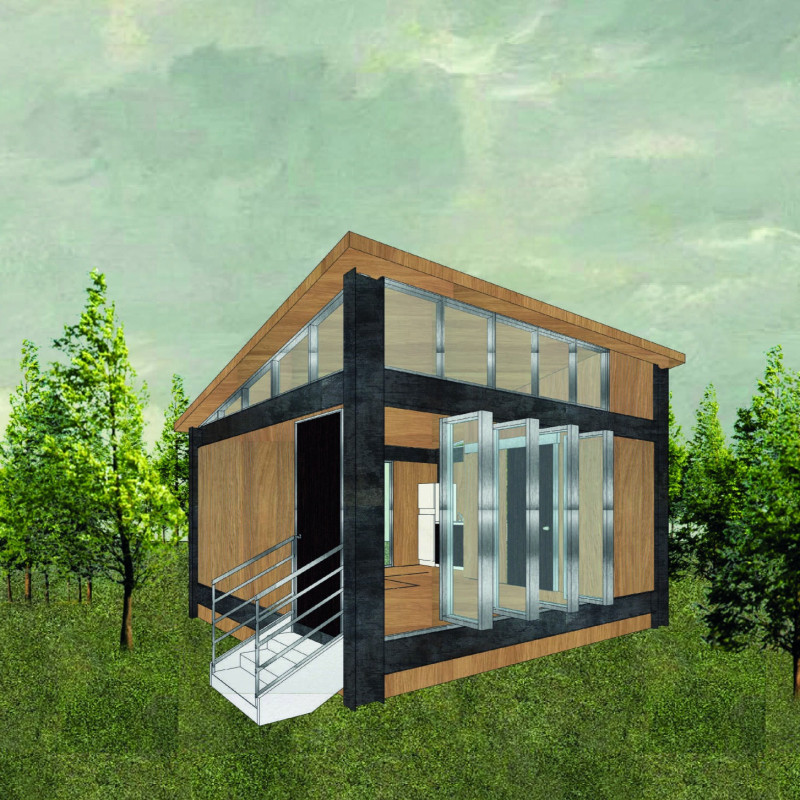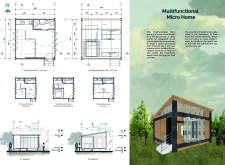5 key facts about this project
At its core, the Multifunctional Micro Home showcases the principle of living small while living well. The design thoughtfully considers how individuals and families interact with their environment, allowing for seamless transitions between work, leisure, and social activities. This approach responds to contemporary demands for adaptable living spaces that cater to a range of functions without sacrificing comfort or aesthetics.
The architectural design incorporates an innovative layout that effectively utilizes both vertical and horizontal space, enhancing the overall usability of the home. On the ground floor, the strategy involves an open-plan configuration that combines the kitchen, living area, and workspace into a single fluid environment. This openness encourages social interaction and creates a communal atmosphere within the compact footprint. Key elements include modular furniture that can be reconfigured based on the time of day or the nature of activities, illustrating a keen understanding of functional design.
The underground level serves as an extension of the living space, conceiving areas designed for utility and additional leisure options. This aspect not only maximizes the use of land but also introduces possibilities for storage or dedicated workspaces, enhancing the home's capability to serve various functions. The incorporation of sliding panels and foldable furnishings highlights a unique design approach that prioritizes versatility, enabling residents to adapt their space as needed while maintaining an orderly environment.
Materiality plays a central role in this architectural endeavor, as the choice of materials contributes to both the aesthetic quality and environmental impact of the project. The use of wood imparts a natural warmth to the interior spaces while also emphasizing sustainability. Glass elements are strategically employed to enhance natural light penetration, fostering a sense of openness and connection to the external environment. Concrete provides structural robustness, particularly in underground installations, ensuring longevity and durability without compromising the overall design vision.
One of the standout features of the Multifunctional Micro Home is its emphasis on community engagement and ecological integration. By designing spaces that encourage social interaction, the project reflects an understanding of the importance of community in urban settings. This is complemented by landscape elements that harmonize with the architecture, promoting biodiversity and ecological responsibility.
Moreover, the architectural forms employed in the design create an inviting silhouette that resonates with the surrounding environment. The slanted roof not only contributes to the visual appeal but also aligns with functional needs, such as rainwater collection and efficient drainage. The design ethos throughout the project maintains a strong commitment to maximizing both functionality and aesthetics, demonstrating an acute awareness of contemporary architectural possibilities.
For those interested in exploring this project further, detailed examinations of the architectural plans, sections, and designs reveal the intricacies that contribute to its unique character. Engaging with these creative elements can provide valuable insights into modern architectural ideas that balance lifestyle demands with a sustainable approach to living. The Multifunctional Micro Home stands as an example of how thoughtful design can redefine residential environments, making it a worthwhile subject for further reflection and study.























